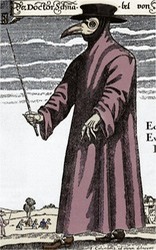Copyright Notice: Reprints of published articles are provided as a service to enhance accessibility and the exchange of information.
All copyrights remain with the original publishers of the articles. Single downloads for personal or non-commercial use only.
Florek MC, Gilbert DP, Plague GR. 2014. Insertion sequence distribution bias in Archaea. Mobile Genetic Elements 4(1):e27829. Supplemental Materials
Madden
ME, Baxter M, Beauchamp H, Bouchard K, Habermas D, Huff M, Ladd B, Pearon J, Plague
G.
2013.
Rethinking STEM education: an interdisciplinary STEAM curriculum. Procedia
Computer Science
20:541-546.
Plague GR, Dougherty KM, Boodram KS, Boustani SE, Cao H, Manning SR, McNally CC. 2011. Relaxed natural
selection alone does not permit
transposable element expansion within 4,000 generations in Escherichia coli. Genetica
139:895-902.
Supplemental Materials
Plague GR. 2010. Intergenic transposable elements
are not randomly distributed in Bacteria. Genome Biology and Evolution
2:584-590.
Supplemental Materials
Plague GR, Voltaire G, Walsh BE, Dougherty KM. 2010.
Rice weevils and maize weevils (Coleoptera: Curculionidae)
respond differently
to disturbance of stored grain. Annals of the Entomological Society of
America
103:683-687.
Dougherty KM, Plague GR. 2008. Transposable
element loads are extremely variable in a bacterial symbiont of weevils.
Applied
and Environmental Microbiology 74:7832-7834.
Supplemental Materials
Plague GR, Dunbar HE, Tran PL, Moran NA. 2008.
Extensive proliferation of transposable elements in heritable
bacterial
symbionts. Journal of Bacteriology 190:777-779.
Supplemental Materials
Moran NA, Plague GR. 2004. Genomic changes following host restriction in bacteria. Current Opinion in Genetics and Development 14:627-633.
Ryan TJ, Plague GR. 2004. Hatching asynchrony, survival, and the fitness of alternative life cycles in Ambystoma talpoideum. Oecologia. 140:46-51.
Moran NA, Plague GR, Sandström JP, Wilcox JL. 2003. A genomic perspective on nutrient-provisioning by bacterial symbionts of insects. Proceedings of the National Academy of Sciences, USA 100:14543-14548.
Plague GR, Dale C, Moran NA. 2003. Low and
homogeneous copy number of plasmid-borne symbiont genes affecting
host
nutrition in Buchnera aphidicola of the aphid Uroleucon ambrosiae. Molecular Ecology 12:1095-1100.
Plague GR, McArthur JV. 2003. Phenotypic
plasticity of larval retreat design in a net-spinning caddisfly. Behavioral
Ecology
14:221-226.
Dale C, Plague GR, Wang B, Ochman H, Moran NA. 2002. Type III secretion systems and
the evolution of mutualistic
endosymbiosis. Proceedings of the National
Academy of Sciences, USA 99:12397-12402.
Plague GR, Larson JH.
2002. Analysis of an apparent genetic cline in the stonefly Pteronarcys scotti (Plecoptera:
Pteronarcyidae). Journal of Entomological Science 37:278-280.![]()
Plague GR, Mulvey M, Glenn TC,
McArthur JV. 2001. Molecular genetic markers provide no evidence for
reproductive
isolation among retreat building phenotypes of the net-spinning
caddisfly Macrostemum carolina.
Molecular Ecology 10:243-248.
Plague GR, McArthur JV. 2000.
Polymorphic larval retreats in the net-spinning caddisfly Macrostemum
carolina
(Trichoptera: Hydropsychidae): form and putative function. Florida Entomologist 83:497-500.
Plague GR. 1999. Evolution of net-spinning
caddisflies: a hypothetical mechanism for the reproductive isolation of
conspecific competitors. Oikos 87:204-208.
Plague GR, Wallace JB, Grubaugh
JW. 1998. Linkages between trophic variability and distribution of Pteronarcys spp.
(Plecoptera: Pteronarcyidae)
along a stream continuum. American Midland Naturalist 139:224-234.
Plague GR, McArthur JV. 1998. Genetic diversity vs
geographic distribution of five congeneric caddisflies. Hydrobiologia
362:1-8.
Plague GR. 1996. Examination of
the feeding behavior of larval Tropisternus (Coleoptera:
Hydrophilidae). Journal of the
Kansas Entomological Society 69:104-107.
